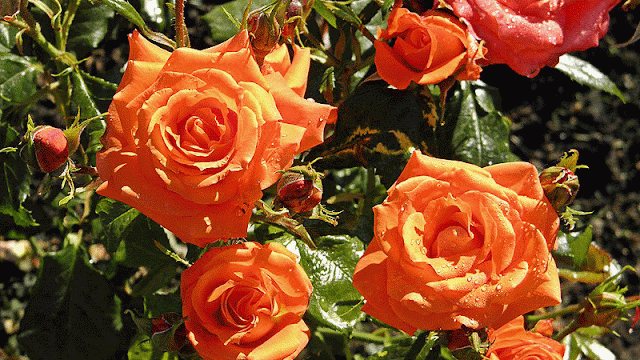Azalea Propagation: Methos, Tips for Toxicity and Leaf Spot Prevention
Azaleas not only add beauty to your garden, but they also hold cultural significance. In many cultures, Azaleas represent femininity, elegance, and a love of nature. Additionally, they symbolize temperance and balance, making them a perfect addition to any garden. By propagating these lovely shrubs, you can enjoy their beauty and symbolism while increasing their numbers in your garden. This article will guide you through the process of Azalea propagation, providing helpful tips and precautions to ensure a successful and safe experience.
Propagating Azaleas from Seeds
Azaleas can be propagated sexually using seeds. However, it is a slow process, and it can take several years for the plants to produce flowers. Additionally, the plants grown from seeds may not resemble the parent plant in terms of color or shape, so it's not the most reliable method for propagation.
Propagating Azaleas Without Seeds
Asexual propagation of azaleas is the most common method used to propagate these plants. It involves taking cuttings, layering, and grafting.
Propagating Azaleas form Cuttings:
Taking cuttings is the simplest method of propagating azaleas. It involves taking a stem cutting from a healthy parent plant, removing the leaves from the bottom, and dipping the cut end in rooting hormone before planting it in a rooting medium. The cutting should be kept moist, and after a few weeks, roots will start to grow, and a new plant will develop.
Propagating Azaleas by Layering:
Layering involves bending a branch of the parent plant to the ground and making a small cut in the bark. Then, the branch is held down with a wire or a rock, and soil is added over the cut. The branch will develop roots, and once it has established enough, it can be cut from the parent plant and transplanted.
Propagating Azaleas by Grafting:
Grafting involves taking a cutting from the desired azalea cultivar and grafting it onto the rootstock of another azalea plant. This method allows you to propagate a specific cultivar while also taking advantage of the root system of another plant.
Tissue Culture Propagation of Azaleas
Tissue culture propagation of azaleas is a technique used to produce a large number of plants with desirable traits in a short period of time. It involves growing plants from small pieces of plant tissue in a laboratory under sterile conditions. This method has numerous advantages over traditional propagation methods like cuttings, including the ability to produce large numbers of identical plants, disease-free plants, and the preservation of desirable genetic traits. Here is an overview of the tissue culture propagation process for azaleas.
Selection of Parent Plants:
The first step in tissue culture propagation is selecting healthy parent plants with desirable traits, such as flower color or disease resistance.
Tissue Collection:
Small pieces of plant tissue, called explants, are collected from the parent plants. This can include pieces of leaves, stems, or buds.
Sterilization:
The explants are sterilized to remove any bacteria, fungi, or viruses that may be present on the surface of the tissue. This is typically done using a combination of bleach and alcohol.
Growth Medium:
The sterilized explants are placed on a nutrient-rich growth medium that contains sugars, minerals, and other nutrients necessary for plant growth.
Growth Hormones:
Growth hormones, such as auxins and cytokinins, are added to the growth medium to stimulate the growth and development of the plant tissue.
Cultivation:
The explants are grown in sterile conditions under controlled temperature, humidity, and lighting conditions. Over time, the tissue will begin to grow and develop into small plantlets.
Transplantation:
Once the plantlets have reached a suitable size, they are transplanted into soil and grown in a greenhouse or other controlled environment until they are ready for sale or planting.
Tissue culture propagation is a valuable tool for producing large numbers of azalea plants with desirable traits. However, it requires specialized equipment and expertise, and is typically used by commercial nurseries and plant breeders. By understanding the tissue culture propagation process, you can appreciate the amount of work and care that goes into producing the plants you see in nurseries and garden centers.
Tips for Successful Azalea Propagation
Azalea propagation can be a rewarding process for gardeners, but it requires patience, skill, and knowledge. Whether you are propagating azaleas through seeds, cuttings, or layering, these tips can help ensure success and produce beautiful, healthy plants.
- Choose healthy parent plants for propagation.
- Use a rooting hormone to increase the success rate of cuttings.
- Keep the soil moist but not waterlogged.
- Avoid direct sunlight on newly propagated plants.
- Maintain a warm and humid environment for newly propagated plants.
- Transplant newly propagated plants into their permanent location once they have established roots.
Toxicity in Azalea Propagation
Azaleas are toxic to animals and humans when ingested, so it's important to take precautions when propagating these plants. Wear gloves when handling azalea plants, and wash your hands thoroughly afterward. Keep azalea plants out of reach of pets and children, and avoid using azalea clippings in compost or mulch.
Leaf Spot in Azalea Propagation
Leaf spot is a fungal disease that affects azalea plants. It appears as brown spots on the leaves and can cause them to drop prematurely. To avoid leaf spot, keep the foliage dry, avoid overcrowding the plants, and maintain good air circulation. If leaf spot does occur, remove infected leaves and treat the plant with a fungicide.
Azalea Propagation for Stunning Garden Displays
Propagation is an excellent way to create a beautiful azalea garden. With proper care and attention, you can increase the number of azaleas in your garden and enjoy their beautiful azalea flowers year after year. By following the tips and methods discussed in this article, you can successfully propagate azaleas and create a stunning display in your landscape.



